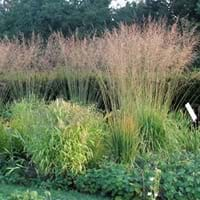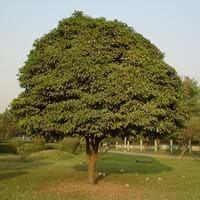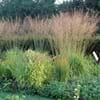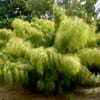Life Span
Perennial
Perennial
Origin
Europe, Eastern Europe, Southern Europe, Russia/Siberia, Asia, Central Asia, Southern Asia
India, Melanesia
Types
Not Available
Alphonso, Florigon, Jakarta
Number of Varieties
Not Available
Habitat
Boggy areas, Dry and Young forest Heaths, Lowland
Subtropical climates, Tropical regions
USDA Hardiness Zone
5-8
10-15
AHS Heat Zone
9 - 1
Not Available
Sunset Zone
1a, 1b, 2a, 2b, 3a, 3b, 4, 5, 6, 7, 8, 9, 14, 15, 16, 17
H1, H2, 23, 24
Habit
Arching/Fountain-shaped
Oval or Rounded
Flower Color
Dark Purple
Yellow, Red
Flower Color Modifier
Bicolor
Bicolor
Fruit Color
Not Available
Yellow, Red, Green, Orange, Pink, Rose, Bronze
Leaf Color in Spring
Green
Red, Purple, Dark Green, Bronze
Leaf Color in Summer
Light Green
Red, Purple, Dark Green, Bronze
Leaf Color in Fall
Green, Gold
Red, Purple, Dark Green, Bronze
Leaf Color in Winter
Tan
Light Green
Leaf Shape
Needle like
Ovate
Plant Season
Spring, Summer, Fall, Winter
Spring, Summer, Fall, Winter
Sunlight
Partial Sun, Partial shade
Full Sun
Type of Soil
Clay, Loam, Sand
Loam, Sand
The pH of Soil
Acidic, Neutral
Acidic, Neutral, Alkaline
Soil Drainage
Average
Well drained
Bloom Time
Early Summer, Summer, Late Summer, Early Fall
Early Spring, Spring, Late Spring, Early Summer, Summer, Winter, Late Winter
Tolerances
Not Available
Drought
Where to Plant?
Ground, Pot
Ground
How to Plant?
Divison, Transplanting, Vegetative Reproduction
Grafting, Seedlings, Stem Planting, Transplanting
Plant Maintenance
Low
High
Watering Requirements
Requires regular watering, Water more frequently during periods of extreme drought
Over-head watering
In Summer
Lots of watering
Lots of watering
In Spring
Moderate
Moderate
In Winter
Average Water
Average Water
Soil pH
Acidic, Neutral
Acidic, Neutral, Alkaline
Soil Type
Clay, Loam, Sand
Loam, Sand
Soil Drainage Capacity
Average
Well drained
Sun Exposure
Partial Sun, Partial shade
Full Sun
Pruning
Prune in winter, Remove damaged leaves, Remove dead branches, Remove dead leaves
Remove damaged leaves, Remove dead branches, Remove dead leaves
Fertilizers
No need to fertilize every year
All-Purpose Liquid Fertilizer
Pests and Diseases
Pests and diseases free
Red blotch
Plant Tolerance
Not Available
Drought
Flowers
Showy
Insignificant
Flower Petal Number
Single
Single
Foliage Texture
Medium
Medium
Foliage Sheen
Matte
Glossy
Attracts
Not Available
Birds
Allergy
Not Available
bullous cheilitis, contact allergic dermatitis, Urticaria
Aesthetic Uses
Showy Purposes, Water gardening
Showy Purposes
Beauty Benefits
Not Available
Acne, Improve hair condition, Makes teeth white, Moisturizing, Removes dandruff
Environmental Uses
No fertilizer, pesticides, or herbicides needed
Air purification, Food for birds, Shadow Tree
Medicinal Uses
Not Available
anti-cancer, Digestion problems, Eye Problems, High cholestrol, Immunity
Part of Plant Used
Whole plant
Whole plant
Other Uses
Used as Ornamental plant
Grown for shade, Used As Food, Used as Ornamental plant
Used As Indoor Plant
No
No
Used As Outdoor Plant
Yes
Yes
Garden Design
Bedding Plant, Container, Cutflower, Dried Flower/Everlasting, Mixed Border
Edible, Feature Plant, Fruit / Fruit Tree, Shade Trees, Tropical
Botanical Name
Molinia arundinacea
MANGIFERA indica
Common Name
Moor Grass
Mango
In Hindi
Tall Moor Grass
आम का पेड़
In German
Hoch Pfeifengras
Mango Baum
In French
Herbe Moor hauteur
Manguier
In Spanish
Tall Grass Moor
Árbol de mango
In Greek
Ψηλός Moor Grass
Mango Tree
In Portuguese
Alto Moor Relva
Mangueira
In Polish
Wysoki Moor Trawa
Drzewo mango
In Latin
Alta Maurus Grass
Mango ligno
Phylum
Magnoliophyta
Magnoliophyta
Class
Liliopsida
Magnoliopsida
Order
Cyperales
Sapindales
Family
Poaceae
Anacardiaceae
Clade
Angiosperms, Commelinids, Monocots
Not Available
Tribe
Not Available
Not Available
Subfamily
Not Available
Not Available
Number of Species
Not Available
Not Available
Importance of Molinia Arundinacea and Mango Tree
Want to have the most appropriate plant for your garden? You might want to know the importance of Molinia Arundinacea and Mango Tree. Basically, these two plants vary in many aspects. Compare Molinia Arundinacea and Mango Tree as they differ in many characteristics such as their life, care, benefits, facts, etc. Every gardener must at least have the slightest clue about the plants he wants to plant in his garden. Compare their benefits, which differ in many ways like facts and uses. The medicinal use of Molinia Arundinacea is Not Available whereas of Mango Tree is anti-cancer, Digestion problems, Eye Problems, High cholestrol and Immunity. Molinia Arundinacea has beauty benefits as follows: Not Available while Mango Tree has beauty benefits as follows: Not Available.
Compare Facts of Molinia Arundinacea vs Mango Tree
How to choose the best garden plant for your garden depending upon its facts? Here garden plant comparison will help you to solve this query. Compare the facts of Molinia Arundinacea vs Mango Tree and know which one to choose. As garden plants have benefits and other uses, allergy is also a major drawback of plants for some people. Allergic reactions of Molinia Arundinacea are Not Available whereas of Mango Tree have bullous cheilitis, contact allergic dermatitis and Urticaria respectively. Having a fruit bearing plant in your garden can be a plus point of your garden. Molinia Arundinacea has showy fruits and Mango Tree has showy fruits. Also Molinia Arundinacea is not flowering and Mango Tree is not flowering . You can compare Molinia Arundinacea and Mango Tree facts and facts of other plants too.





